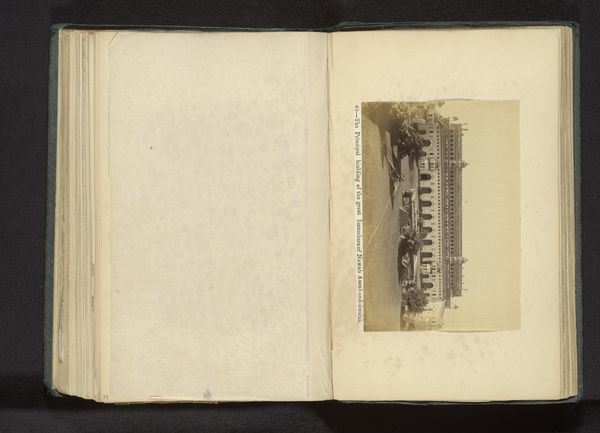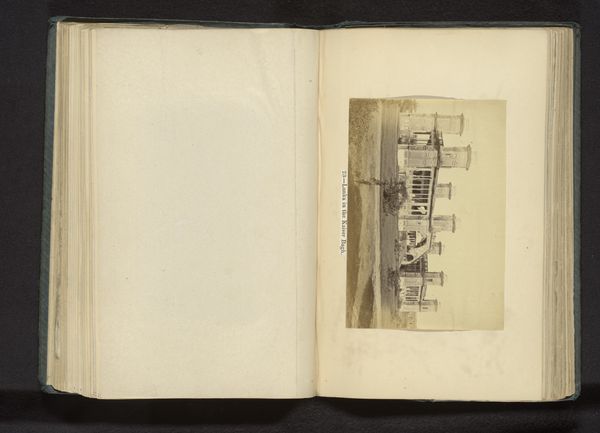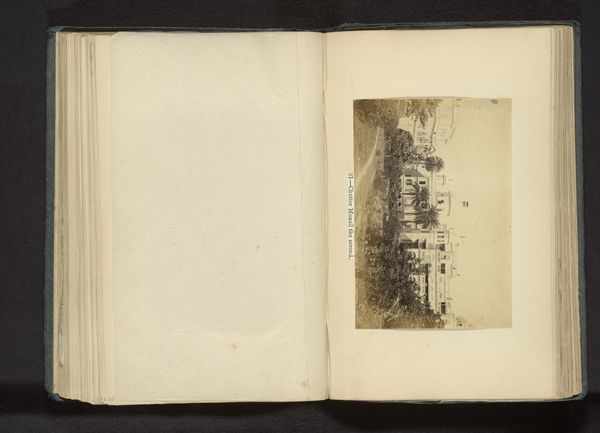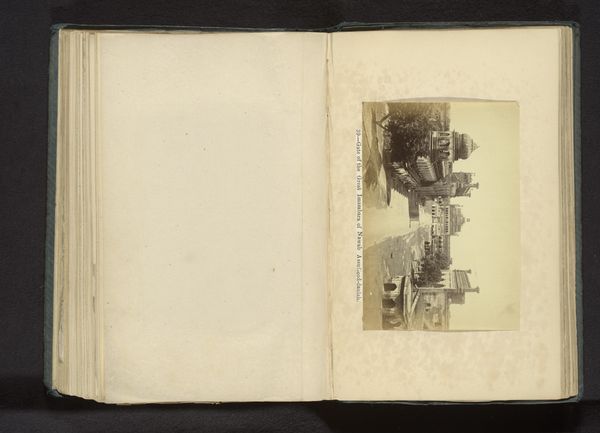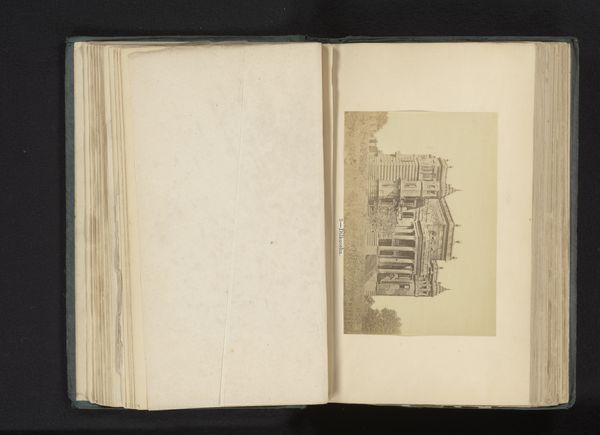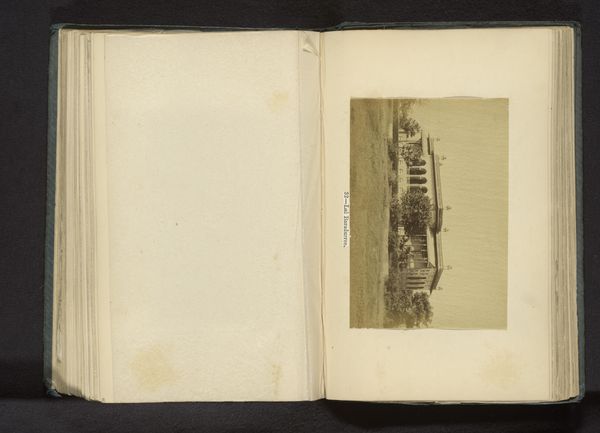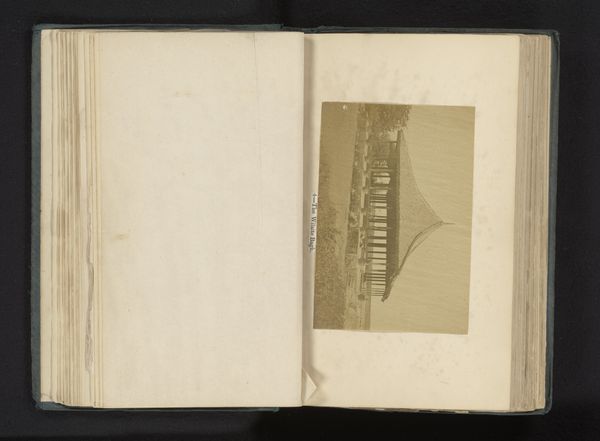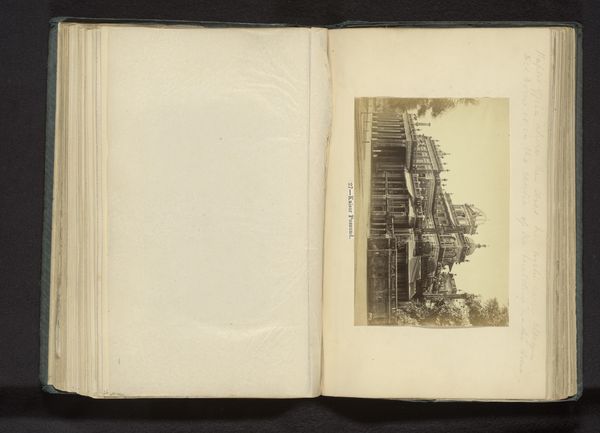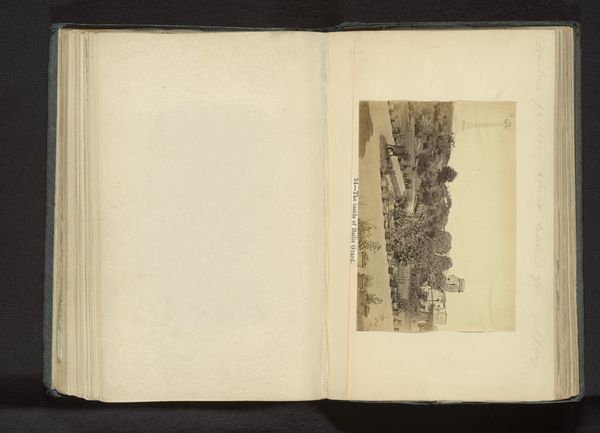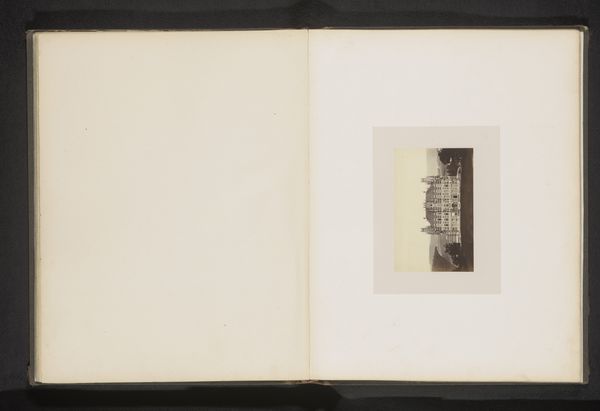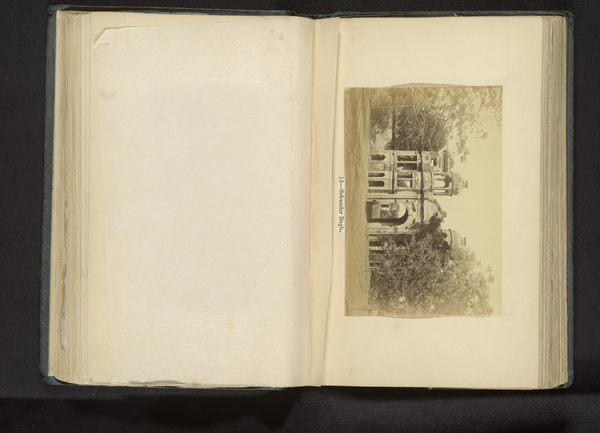
print, photography, albumen-print, architecture
#
aged paper
#
homemade paper
# print
#
sketch book
#
hand drawn type
#
landscape
#
paper texture
#
photography
#
personal sketchbook
#
fading type
#
sketchbook drawing
#
islamic-art
#
sketchbook art
#
design on paper
#
albumen-print
#
architecture
Dimensions: height 105 mm, width 154 mm
Copyright: Rijks Museum: Open Domain
Editor: This albumen print, taken before 1874 by Darogha Ubbas Alli, captures the Chota Imambara in Lucknow. It's fascinating how a photograph, pasted into what looks like a personal sketchbook, transforms a grand architectural subject into something intimate and almost diaristic. What story do you think this image and its presentation tell? Curator: This image offers us a glimpse into the power dynamics of the time and the role photography played in shaping perceptions. The very act of capturing this impressive structure and placing it within a sketchbook reflects a desire to possess, to document, and perhaps even to frame a particular narrative about British power and its relationship with Indian architecture. Consider who the photographer was and for whom was he creating this image. Was it purely for aesthetic appreciation, or was it also serving a political purpose, documenting and cataloging colonial holdings? Editor: That's a really interesting point. I hadn't considered the act of documentation itself as a potential assertion of power. Does the presence of the handwritten caption beside the photo play into that idea as well? Curator: Absolutely. The caption is key. It not only identifies the subject but also frames it for the viewer. Who chose those words, and what were they intending to convey? The inscription and the photographer's choice to photograph the Chota Imambara highlights a selective portrayal, influencing how viewers in both colonial and metropolitan contexts would understand Islamic architecture and culture in Lucknow. We have to be critical in decoding what this image might conceal about the social realities of Lucknow under colonial rule. Editor: So, understanding the historical context and the motivations behind image creation are just as important as appreciating the architectural details themselves. It makes me see this photograph as more than just a pretty picture in a sketchbook. Curator: Exactly. By looking at photography through this lens, we can begin to unpack the complexities of colonial history. Editor: I’ll definitely look at photography with a different eye now. Thanks!
Comments
No comments
Be the first to comment and join the conversation on the ultimate creative platform.
